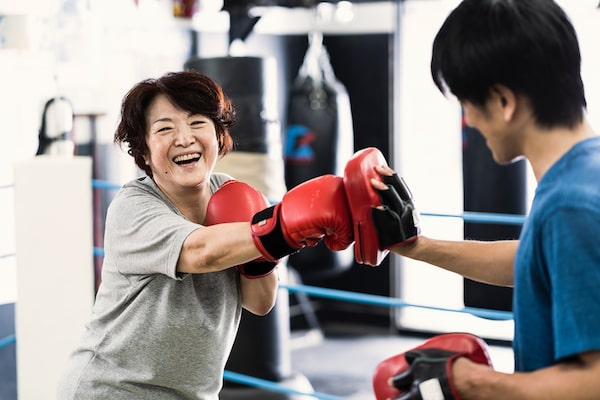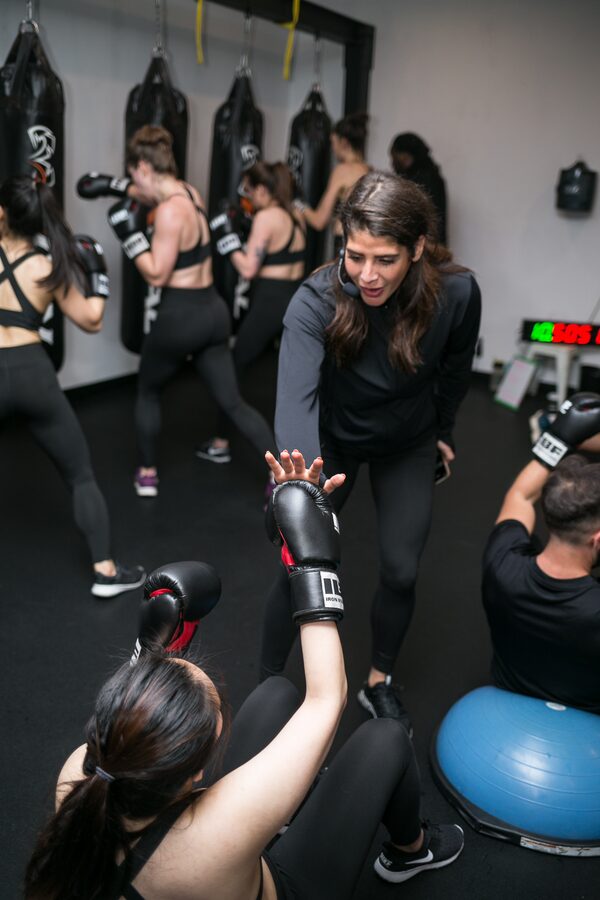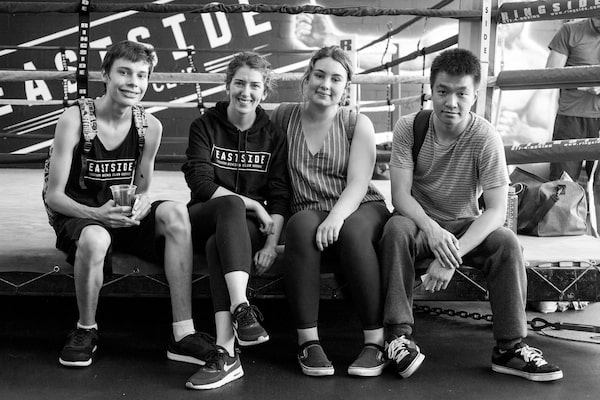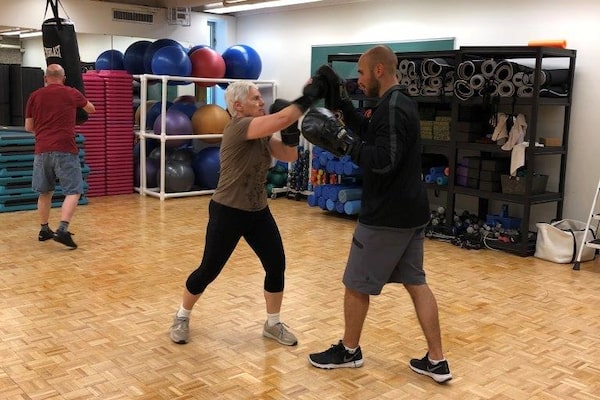
Boxing is a boon for any age. It helps ease symptoms of Parkinson’s disease, increases body positivity and offers people a safe way to let go of big and difficult feelings.Yagi-Studio/iStockPhoto / Getty Images
For Caleigh Rykiss, discovering boxing in her early 20s was a life-changer. “The style of movement made me see exercise from a new perspective. I went from wanting to be thin to wanting to be strong and badass,” says the former TV producer who also moonlighted as a competitive boxer after being introduced to the sport.
The discipline is experiencing a modern revival and today’s fight clubs aren’t just about beating each other up. From body positivity to programs helping people with Parkinson’s disease, fitness boxing classes are tapping into a myriad of benefits.

Caleigh Rykiss discovered boxing during her twenties and shares her passion at BOLO (BodyLove Inc.), her fitness gym in downtown Toronto.Courtesy of Uniqlo
For starters, “boxing takes you out of your own thoughts and anxieties. Because there are a million and one things to think about – the combo, the rhythm, the foot twists, the punch placement and more – there is no time to be in your head,” Rykiss says. Plus, the sheer act of punching is stress-busting to many, she adds.
Boxing is also empowering because it requires more than going through the motions of a generic exercise class. It demands the diligent practice of a highly technical sport resulting in strength, agility and body positivity. “[This] helps us focus less on calories burned and more on how skills are progressing. Boxing is about what you can do rather than what you look like,” Rykiss says.
Her passion for the sport led to the launch of BOLO (BodyLove Inc.), a stylish hybrid gym, café and lounge in Toronto that Rykiss opened just over a year ago. Newbies and enthusiasts can explore boxing for all levels, from beginner-friendly classes (involving technical shadowboxing, bag work and hand pad work) to advanced sweat sessions (with controlled sparring in a ring).
Enriching people through sport is also the raison d’etre for Eastside Boxing Club (ESB), a non-profit gym in Vancouver’s Downtown Eastside, a neighbourhood that traditionally has higher levels of poverty and drug use.
The club was started as a space for vulnerable youth in the area, especially teenagers at risk of becoming homeless. The goal was to ensure they would always have a place to go other than the streets or gang culture, says ESB community director Leigh Carter.
The afterschool program is easy to join: kids can drop in as they like and ESB will also provide clothes and equipment for those who don’t have them. Classes include skipping, shadowboxing, rounds on a bag and calisthenics.
As for why boxing is beneficial, Carter describes it as meditative: people can get their minds off their troubles and just focus on the task at hand. Plus, “it’s cathartic to hit a punching bag and get out some aggression in a positive way.” After a few weeks of working out their feelings at ESB, it’s common for youth to say they feel less angry.

EBCVancouver’s Eastside Boxing Club has helped over 500 young people in their free afterschool program that nurtures relationship building and life skills by getting into the ring.Mario Szabo
At over one hundred gyms around the world, boxing is also being used to fight an opponent of a different sort: Parkinson’s disease, a progressive neurodegenerative disorder that affects movement and causes symptoms such as tremors, rigid muscles, slowness and impaired balance.
While there is no cure, reversing, reducing and even delaying symptoms of the disease is the goal of Rock Steady Boxing (RSB), a non-contact boxing-inspired program founded in 2006 by the non-profit organization of the same name. Based in Indianapolis, they certify trainers with their specific fitness program that “empowers people with Parkinson’s disease to ‘fight back.’”
Research has underscored the importance of fitness when living with this disease. The Parkinson’s Outcomes Project, a large-scale clinical study, found that those with the disorder who exercised for at least 2.5 hours weekly had a better health-related quality of life and a slower decline.
The motivation for teaching boxing in particular to Parkinson’s patients was based on two more findings, explains Patrick Bernat, exercise physiologist and RSB-certified instructor at the University of Regina’s Dr. Paul Schwann Centre, who brought the Rock Steady Boxing program to the non-profit health and wellness facility earlier this year. A group effort, he also works with lead coaches Carmen Agar and Danielle Houle.

Rock Steady Boxing trainer Patrick Bernat encourages Debra Bean to explore her strengths. The program promotes the power of movement to help ease the symptoms of Parkinson’s disease.Chelsea Jones
“A study at Cleveland Clinic found that individuals who performed ‘forced exercise,’ rather than voluntary exercise, had more significant improvement in their symptoms of Parkinson’s,” Bernat says. And second, an ESPN study that enlisted scientists and other experts to rank 60 sports deemed boxing to have the greatest degree of difficulty.
Boxing demanded the most from 10 different athletic skills including speed, endurance and hand-eye coordination – the same skills that would benefit Parkinson’s patients to hone. And beyond the physical side, there’s a welcome camaraderie that comes with the Rock Steady Boxing program, Bernat says.
While throwing punches is no substitute for pharmaceutical treatments, exercise and drug therapy can work in tandem. “It’s a powerful strategy to help slow down symptoms of Parkinson’s and many other chronic conditions as well,” Bernat says. “I think this program encompasses the notion that ‘exercise is medicine’ quite well.”